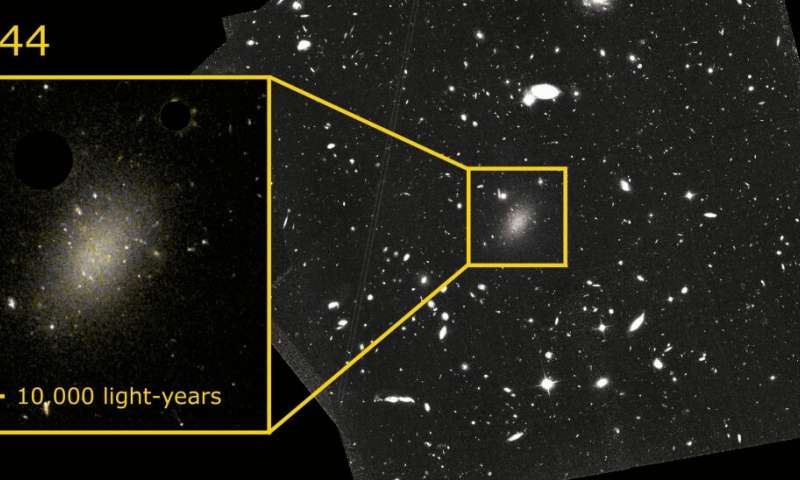HOME
The puzzle of the strange galaxy made of 99.9% dark matter is solved

At present, the formation of galaxies is difficult to understand without the presence of a ubiquitous, but mysterious component, termed dark matter. Astronomers have measure how much dark matter there is around galaxies, and have found that it varies between 10 and 300 times the quantity of visible matter. However, a few years ago, the discovery of a very diffuse object, named Dragonfly 44, changed this view. It was found that this galaxy has 10,000 times more dark matter than the stars. Taken back by this finding, astronomers have made efforts to see whether this object is really anomalous, or whether something went wrong in the analysis of the observations. Now we have the answer.
An international team led by the Kapteyn Institute of the University of Groningen (the Netherlands), with participation by the Instituto de Astrofísica de Canarias (IAC) and the University of La Laguna (ULL), has found that the total number of globular clusters around Dragonfly 44 and, therefore, the dark matter content, is much less than earlier findings had suggested, which shows that this galaxy is neither unique nor anomalous. The result was recently published in Monthly Notices of the Royal Astronomical Society (MNRAS).
The galaxy Dragonfly 44 was discovered in a deep survey of the Coma cluster, a cluster with several thousand galaxies. From the start, the galaxy was considered remarkable by the researchers because the quantity of dark matter they inferred was almost as much as that in the Milky Way, the equivalent of a billion solar masses.
However, instead of containing around a hundred thousand million stars, as has the Milky Way, DF44 has only a hundred million stars, a thousand times fewer. This means that the amount of dark matter was ten thousand times greater than that of its stars. If this had been true, it would have been a unique object, with almost 100 times as much dark matter as that expected from the number of its stars.
News Source